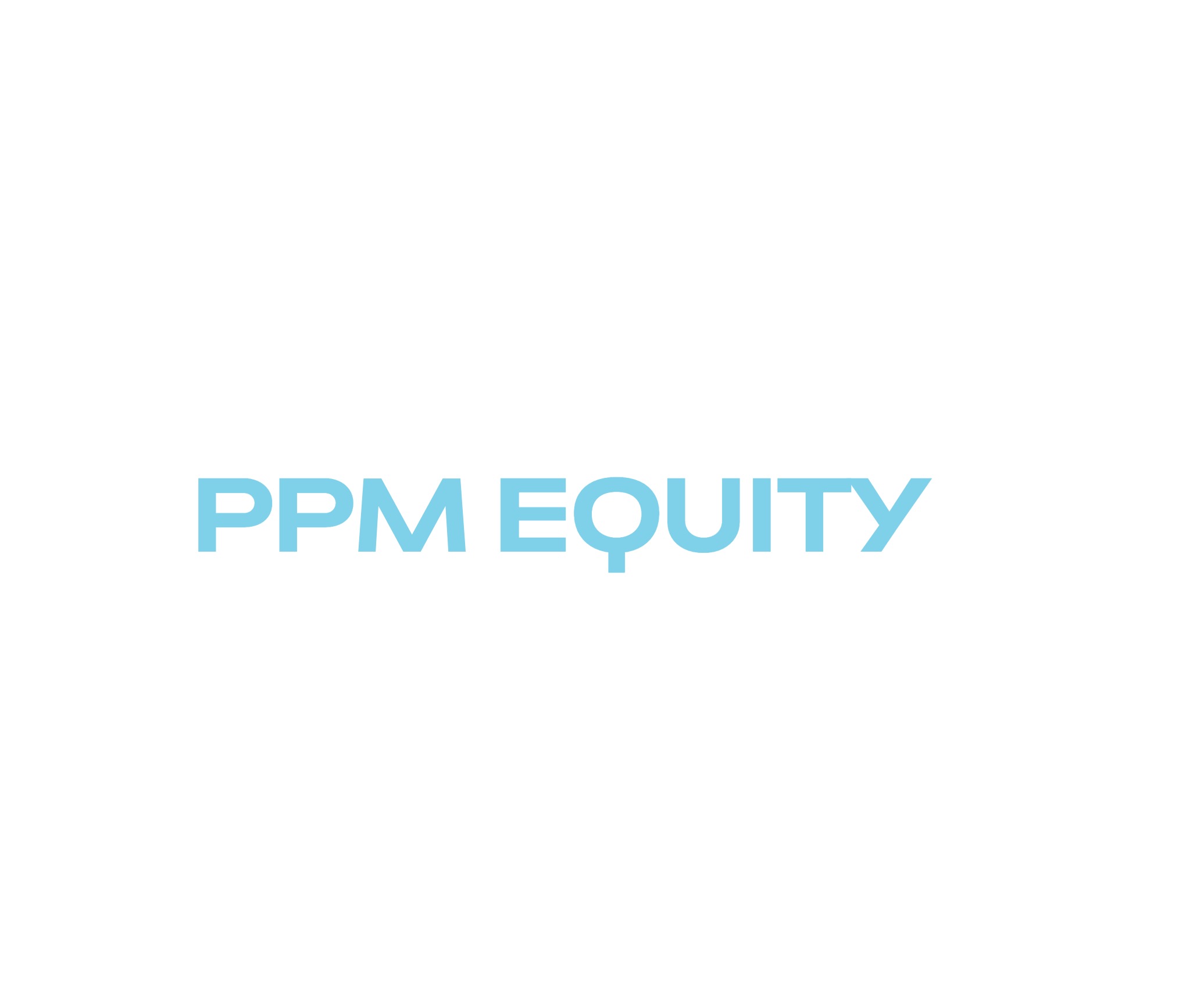Private Placement Memorandum
Demystifying Private Placements: Understanding the Essence of a PPM
The mysterious world of private placements is unraveled in our guide to understanding PPMs—read on to learn the essentials and protect your investments.

A Private Placement Memorandum (PPM) is a detailed legal document essential for private offerings, primarily aimed at accredited investors under Regulation D. It promotes transparency by outlining the business overview, financial projections, and potential risks involved. The PPM covers the terms of the offering, investor qualifications, and any conflicts of interest, providing a clear forecast of returns. Key components include management track records, use of proceeds, risk factors, and tax implications. Proper disclosure in a PPM safeguards both investors and issuing companies, fostering informed decision-making. For deeper understanding, exploring further will offer valuable insights.
Key Takeaways
- A PPM ensures full disclosure of relevant information for private offerings, primarily for accredited investors under Regulation D.
- It includes a business overview, financial projections, risk disclosures, and terms of the offering.
- Proper disclosure in a PPM protects both investors and issuing companies through transparency on risks and potential returns.
- Key components of a PPM include financial statements, management team details, and use of proceeds.
- Understanding risk factors such as illiquidity, tax implications, and conflicts of interest is crucial in private offerings.
What Is a PPM?

A Private Placement Memorandum (PPM) is a legal document that provides potential investors with detailed information about a private offering. Private Placement Memorandums are vital for those seeking to invest in private placements, as they guarantee that all relevant information is disclosed, allowing for informed decision-making. Governed by Regulation D of the Securities Act of 1933, PPMs cater primarily to accredited investors, who are individuals or entities that meet specific financial criteria, ensuring they've the necessary experience and financial capability to evaluate and bear the risks of the investment.
A PPM includes crucial elements such as a detailed business overview, financial projections, and a thorough disclosure of potential risks associated with the investment. By presenting this data, potential investors gain a transparent view of what they're investing in, minimizing surprises and enhancing their control over investment decisions.
The document outlines the terms of the offering, including the structure of the investment, investor qualifications, and the rights and obligations of both parties. Additionally, it identifies any conflicts of interest and ensures that all risks are clearly communicated, thereby protecting both the investors and the issuing company from future disputes.
Importance of a PPM

Understanding the significance of a PPM is vital for both investors and companies, as it guarantees transparency and informed decision-making in private investment opportunities. A Private Placement Memorandum (PPM) provides detailed information that investors need to make educated choices. It outlines the company's financial projections, ensuring financial transparency, and introduces the management team, highlighting their expertise and experience.
The PPM is essential in communicating potential risks associated with the investment. This transparency allows investors to weigh the risk factors disclosure against potential returns, enabling them to make well-informed decisions. Additionally, it serves as a protective measure for companies, as it formally discloses all relevant information, mitigating the risk of future disputes.
Key components of a PPM include a detailed business overview, details of the securities offered, and the terms of the offering. By clearly stating these elements, the PPM ensures that all parties understand the investment's scope and conditions.
Legal compliance is also a critical aspect, as it protects both the company and the investor from legal repercussions. Essentially, a well-constructed PPM fosters trust and clarity, essential elements for successful private placements.
Investor Protections

Investors rely on the protections outlined in a Private Placement Memorandum (PPM) to safeguard their interests in private investment ventures. The PPM provides essential information that investors need to make informed decisions. This detailed document acts as a protective measure by clearly presenting financial projections and risk disclosure.
Transparency is important, and the PPM guarantees investors are aware of potential risks, offering an honest view of what to expect.
It's important for investors to understand that a PPM offers a thorough risk disclosure, detailing possible challenges and uncertainties associated with the investment. This essential measure is crucial because it lays out all the information needed to evaluate the risk versus reward scenario.
Financial projections included in the PPM present a forecast of potential returns and financial status, allowing investors to gauge the feasibility and profitability of the venture.
Additionally, the PPM serves to protect not just the investors, but also the company issuing the securities, by ensuring all parties are on the same page. By providing transparent and thorough information, the PPM mitigates misunderstandings and legal disputes, fostering a trustworthy investment environment.
Key Components

While investor protections are foundational, it's the key components of a Private Placement Memorandum (PPM) that provide the detailed insights necessary for informed decision-making. The PPM outlines the terms of the investment, offering size, use of proceeds, estimated hold period, and the track record of the management team. Each element offers investors a thorough view of what they are committing to when they decide to invest in your business.
Below is a table summarizing the key components of a PPM:
| Component | Description | Importance |
|---|---|---|
| Terms of the Investment | Details on investment structure, investor rights, and distribution policies | Clarifies investor expectations and rights |
| Financial Statements | Historical and projected financial data | Assesses financial health and potential returns |
| Risks Associated | Disclosure of potential risks, liquidity issues, and tax implications | Informs investors of potential downsides |
| Track Record | History and performance of the management team | Provides confidence in the capabilities of the operators |
Investor eligibility is another vital aspect, ensuring that only accredited investors, as defined by Regulation D rule 501, or sophisticated non-accredited investors participate. Understanding the risks associated, including conflicts of interest, is essential for making well-informed decisions. This detailed breakdown helps investors grasp all aspects of the offering, ensuring they are fully aware of their commitments and potential returns.
Financial Disclosures

Financial disclosures in a Private Placement Memorandum (PPM) offer investors a transparent view of a company's past and projected financial performance. This transparency is crucial for those who desire control over their investment decisions. Through detailed financial disclosures, investors can evaluate the company's financial health and potential return on investment. By examining revenue streams, expenses, and profit margins, they gain a thorough understanding of the company's operations and profitability.
These disclosures are essential for appraising the risks and rewards associated with the investment opportunity. Investors can scrutinize historical financial data and forecasted performance to gauge the likelihood of achieving their desired returns. Understanding the nuances of revenue streams allows investors to identify the primary sources of income and their sustainability. Analyzing profit margins helps in evaluating the efficiency and profitability of the company's operations.
In-depth financial disclosures enable informed decision-making based on the company's financial position. Investors can determine whether the potential rewards justify the associated risks. With detailed insights into financial health, revenue streams, and profit margins, investors are better equipped to make strategic choices, ensuring their investments align with their financial goals and risk tolerance.
Risk Factors

A Private Placement Memorandum (PPM) meticulously outlines several risk factors, such as key personnel risks, lack of liquidity, and income tax implications, to provide a thorough understanding of potential challenges. In the domain of raising capital through a private offering, understanding these risk factors is essential.
Key personnel risks highlight the potential negative impact of losing essential team members, which could jeopardize the project's success.
The lack of liquidity represents another significant concern, as investors might find it challenging to sell their interests quickly or at a desirable price. This illiquidity can hinder an investor's flexibility and financial planning.
Moreover, income tax implications can have a notable effect on the net returns on investment. These potential tax liabilities must be clearly understood to avoid unforeseen financial burdens.
Conflicts of interest are another critical aspect disclosed in a PPM. For instance, a property manager's interests mightn't always align with those of investors, and such conflicts must be transparently disclosed to ensure informed decision-making.
Proper disclosure of these risk factors and conflicts in a PPM isn't just a regulatory requirement but also a strategic move to protect sponsors from legal action and build trust with investors, ensuring that everyone is aware of the inherent risks involved.
Terms of Offering

The terms of offering section in a Private Placement Memorandum (PPM) provides essential details like the investment size, use of proceeds, and estimated hold period, helping investors make informed decisions. This section is vital for the basics of private placements, offering a thorough overview of the investment opportunity. Clarifying the offering size is important, as it informs investors of the total amount being raised, which can impact their decision to participate in the venture.
In real estate investments, these terms outline how the funds will be allocated, including expenses, management fees, and actual property investments. This transparency is crucial for attracting investors, as it shows them exactly where their money is going. Additionally, disclosing the estimated hold period helps investors understand the expected timeframe for their investment, aligning their financial goals with the project's duration.
Investors often refer to the terms of the offering first, as it condenses the critical information they need to evaluate the opportunity. This section serves as a pivotal part of the PPM, a vital document that can make or break the attractiveness of an investment. By providing clear, detailed insights, it empowers investors to make well-informed choices.
Frequently Asked Questions
What Is Ppm in Private Placement?
A Private Placement Memorandum (PPM) in private placement is a legal document that companies use to raise capital from investors. It details the investment opportunity, including risks, financial projections, and the management team. Non-publicly traded companies need a PPM to comply with securities laws and protect themselves legally.
Investors rely on the PPM to make informed decisions, ensuring they understand the investment's risks and potential rewards.
What Is Private Placement in the Primary Market?
Private placement in the primary market involves a company selling securities directly to a select group of investors without a public offering. This method allows companies to raise capital more efficiently, avoiding the extensive regulatory requirements of public offerings.
Typically, these securities are offered to accredited investors or institutions due to their financial sophistication and risk tolerance. Governed by Regulation D under the Securities Act of 1933, private placements offer a cost-effective funding solution.
How to Evaluate a Private Placement Memorandum?
Surprisingly, 90% of investors overlook detailed risk assessments in a private placement memorandum (PPM).
To evaluate a PPM effectively, one should:
- Examine the management team's experience,
- Review financial projections,
- Assess risks and conflicts, and
- Scrutinize the offering terms.
Ensuring transparency and completeness of information is vital. This thorough approach empowers investors to make informed decisions, aligning investments with their financial goals and risk tolerance.
What Is the Significance of Private Placement?
The significance of private placement lies in its ability to offer companies a cost-effective and efficient way to raise capital from select investors. It provides greater deal flexibility and negotiation power for companies, ensuring tailored investment terms.
For investors, private placements offer access to unique opportunities and potentially higher returns. This method of fundraising bypasses the complexities and high costs associated with public offerings, benefiting both parties involved.
Conclusion
To summarize, a Private Placement Memorandum (PPM) is like a roadmap, guiding investors through the intricate terrain of private placements.
By detailing financial disclosures, risk factors, and terms of the offering, a PPM offers essential insights and protections.
Understanding its key components guarantees that both investors and issuers are well-informed and prepared.
Just as a roadmap is important for a successful journey, a PPM is essential for traversing the complex world of private investments.
Private Placement Memorandum
Market Movers: Economic Factors Shaping Private Placement Landscape
Global economic shifts, from interest rates to geopolitical tensions, dramatically impact private placement opportunities, but how?

Economic factors greatly influence the private placement landscape, shaping investment opportunities and risks for investors and issuers. Fluctuations in interest rates, inflation, and GDP growth have a profound impact on private placements. Rising interest rates increase borrowing costs, while falling rates make private placements more attractive. Inflation and market volatility pose challenges for investors, and regulatory changes require issuers to adapt. GDP growth rates and geopolitical factors, such as trade policies and political instability, also play a critical role in shaping the private placement market. As these factors continue to evolve, investors must stay informed to navigate the complex landscape and make informed decisions.
Key Takeaways
• Fluctuating interest rates impact private placement deals, with rising rates increasing borrowing costs and falling rates making them more attractive.
• Inflation affects private placements by increasing the cost of capital, but they can also offer a hedge against inflation due to fixed-income characteristics.
• Market volatility poses challenges for private placements, making risk management strategies crucial, and diversification helps reduce exposure to inflation risk.
• Regulatory changes, such as the Dodd-Frank Act and Volcker Rule, impact private placement practices, and issuers must navigate evolving frameworks for compliance.
• GDP growth rates influence private equity firms' market opportunities and risks, with changes in GDP growth affecting investor confidence and market volatility.
Interest Rates and Investment

As interest rates fluctuate, private placement investments feel the ripple effect, with rising rates potentially stifling demand and falling rates sparking renewed interest.
Rising interest rates can increase borrowing costs for companies seeking financing, making private placements less attractive to investors. As a result, investors may seek higher returns in other investment avenues, reducing demand for private placements.
On the other hand, falling interest rates can make private placements more attractive in a low-yield environment, as investors seek stable returns. The movement of interest rates also influences the pricing and terms of private placement deals, affecting both issuers and investors.
For issuers, higher interest rates can lead to higher borrowing costs, while investors may demand higher returns to compensate for the increased risk. Understanding the relationship between interest rates and private placement investments is essential for making informed investment decisions.
Inflation's Impact on Private Placements

Rising inflation rates are exerting significant pressure on private placements, driving up the cost of capital for both investors and borrowers. As inflation rises, higher interest rates can make private placements less attractive to investors, impacting the private equity landscape. However, private placements may offer a hedge against inflation due to their fixed-income characteristics.
| Investment Strategy | Inflation Mitigation | Investor Benefits |
|---|---|---|
| Diversification | Reduces exposure to inflation risk | Spreads risk across asset classes |
| Inflation-linked investments | Ties returns to inflation rate | Provides real returns |
| Active management | Adjusts portfolio to mitigate inflation | Enhances returns through due diligence |
| Operational efficiencies | Reduces costs, enhancing returns | Boosts investment performance |
Inflation's impact on private placements underscores the importance of monitoring economic factors for investment decisions. The Inflation Reduction Act, for instance, may influence investment opportunities in the private equity market. As investors navigate the private placement market, they must consider the implications of inflation on their investment strategies, seeking to balance returns with risk mitigation. By doing so, they can optimize their investment portfolios and achieve their financial goals.
Market Volatility and Risk

Market volatility poses a significant threat to private placements, exacerbating the challenges posed by inflation and introducing a new layer of uncertainty for investors. As a result, private equity firms are forced to re-evaluate their investment strategies and adapt to the shifting market landscape.
- Market volatility can lead to fluctuating asset prices, making it challenging for investors to accurately value their portfolios.
- Risk management strategies become vital during periods of market volatility to protect capital in private placements.
- Market instability may affect the availability of capital and the pricing of private placement securities, impacting deal activity and opportunities.
- Investors need to assess the impact of market volatility on their private placement portfolios and adjust strategies accordingly to maximize value.
In this environment, private equity firms must stay vigilant and responsive to market trends, ensuring their investment approaches are flexible and resilient. By doing so, they can navigate the uncertainty and capitalize on emerging opportunities in the private placement market.
Regulatory Changes and Compliance

Understanding the private placement landscape has become increasingly complex, with regulatory changes and compliance requirements playing a critical role in shaping the market.
Recent regulatory changes, such as the Dodd-Frank Act and the Volcker Rule, have had a substantial impact on private placement practices. These changes aim to enhance investor protection and transparency, ensuring that issuers adhere to stringent compliance requirements.
Private placement issuers must navigate the evolving regulatory frameworks set by the SEC or other regulatory bodies to guarantee compliance with securities laws. The primary goal of these regulatory changes is to balance investor interests, risk mitigation, and market stability.
By doing so, private placement issuers can effectively navigate the changing landscape. As regulatory changes continue to shape the private placement market, issuers must remain vigilant in their compliance efforts to uphold market stability and protect investors.
GDP Growth and Economic Indicators

As private placement issuers navigate the complexities of regulatory compliance, they must also contend with the far-reaching impact of GDP growth on their investment strategies. GDP growth rates have a profound influence on private equity firms, shaping their market opportunities and investment risks.
Changes in GDP growth can greatly affect investor confidence, market volatility, and even consumer spending patterns.
GDP growth serves as a critical economic indicator, reflecting the overall health and performance of a country's economy. Private equity firms closely monitor GDP growth rates to gauge market opportunities and assess investment risks.
Understanding GDP growth trends helps private equity investors make informed decisions on capital allocation and timing of investments. Economic indicators like GDP growth inform private placement landscape dynamics, guiding strategic moves and investment opportunities.
Consumer Spending and Demand

How do shifts in consumer spending patterns, which drive nearly three-quarters of the U.S. economy, impact private placement investment opportunities?
Firms and private equity industry players closely monitor consumer spending trends, as they're key indicators of economic health. Strong consumer demand signals a thriving economy, while weak demand can indicate economic challenges.
Shifts in consumer behavior, such as increased online shopping or preferences for sustainable products, greatly impact market dynamics. As consumer spending patterns change, deal activity in certain sectors may increase or decrease, presenting investment opportunities for firms.
For instance, growth in e-commerce may attract investors to the retail sector, while declining spending on traditional brick-and-mortar stores may deter investment. By analyzing consumer spending trends, firms can gain valuable insights into economic growth and identify potential investment opportunities in various sectors.
As consumer spending drives economic growth, understanding these trends is essential for private placement investors seeking to capitalize on emerging opportunities in the market.
Global Trade Patterns and Trends

Global trade patterns have undergone significant changes in recent years, driven by geopolitical tensions, shifts in trade agreements, and rapid technological advancements that have reshaped the flow of goods and services across borders.
These changes have had a profound impact on global trade dynamics, particularly in emerging markets like China and India, which have become major players in shaping global trade patterns. Regional trade blocs, such as the European Union, have also influenced trade agreements and patterns.
Some key trends shaping global trade patterns and trends include:
- The rise of e-commerce, which has transformed cross-border trade and supply chain networks
- The growing importance of emerging markets, particularly China and India
- The impact of tariffs, sanctions, and trade disputes on global trade flows and investment decisions
- The role of regional trade blocs, such as the European Union, in shaping trade agreements and patterns
Geopolitical Factors in Play

Geopolitical tensions and policy shifts are increasingly influencing private equity investments. Trade policies, sanctions, and political instability create an uncertain environment for investors. This uncertainty affects investment decisions in private placements. Changes in global regulations and tariffs introduce new risks.
Geopolitical events like Brexit, trade wars, and tensions between nations impact market sentiment and influence investment strategies. The private placement landscape is particularly vulnerable to geopolitical risks in regions like the Middle East, Asia-Pacific, and Europe.
Elections, regime changes, and international conflicts can lead to market volatility in private placements, making it challenging for investors to make informed decisions. As a result, investors must carefully consider geopolitical factors when making investment decisions.
Frequently Asked Questions
How Do Central Banks Influence Private Placement Markets Indirectly?
Central banks influence private placement markets indirectly by setting interest rates and regulating money supply. When they lower interest rates, borrowing becomes cheaper, and investors seek higher returns through private placements.
Conversely, higher interest rates make borrowing more expensive, reducing demand for private placements. Additionally, central banks' monetary policies affect economic growth, which in turn impacts the attractiveness of private placements as an investment option.
Can Private Placements Hedge Against Currency Fluctuations Effectively?
She examines whether private placements can effectively hedge against currency fluctuations. Since private placements often involve cross-border transactions, they're exposed to currency risks.
However, by incorporating hedging strategies, such as forward contracts or options, investors can mitigate these risks. Successful hedging can minimize losses and guarantee more predictable returns, making private placements a more attractive investment option in a volatile currency market.
What Role Do Family Offices Play in Private Placement Investments?
Family offices play a significant role in private placement investments. They leverage their wealth and expertise to diversify portfolios. They often invest directly in private companies, bypassing traditional funding routes.
With a long-term approach, family offices focus on strategic growth rather than quick returns. This patient capital enables them to ride out market fluctuations, providing stability to private placements.
Their influence is substantial, as they can single-handedly fund entire projects or co-invest with other investors.
How Do Private Placements Compare to Traditional IPOS in Costs?
Private placements and traditional IPOs differ notably in costs. Private placements typically involve lower upfront costs, with legal and administrative fees ranging from $50,000 to $200,000.
In contrast, traditional IPOs can incur costs upwards of $1 million to $5 million, including underwriting fees, legal fees, and regulatory compliance costs.
Additionally, private placements often have lower ongoing costs, as they aren't publicly traded, reducing reporting and compliance expenses.
Are Private Placements More Accessible to Retail Investors Now?
Private placements aren't typically accessible to retail investors, as they usually require a significant investment minimum. However, some online platforms and fintech companies are changing this landscape. They're creating opportunities for retail investors to invest in private placements, often with lower minimums.
This shift could democratize access to private placements, allowing individual investors to participate in deals previously reserved for institutional investors.
Conclusion
To wrap up, the private placement landscape is a delicate dance of interconnected economic factors. As interest rates fluctuate, inflation whispers sweet nothings to investors, and market volatility rattles the cages of even the most seasoned players.
Amidst this complex waltz, regulatory changes and GDP growth take center stage, while consumer spending and global trade patterns provide the subtle yet essential rhythms that shape the market's beat.
Private Placement Memorandum
Private Equity Playbook: Proven Strategies for Successful Investing
Leveraging proven strategies, private equity firms consistently outperform the market, but what sets them apart and how can you replicate their success?

Private equity firms leveraging proven strategies can consistently outperform the market and generate substantial returns. They target underperforming or undervalued companies, implementing operational improvements, and executing well-timed exits. Effective private equity investing involves identifying investment opportunities, building a strong portfolio, and executing operational improvements. Firms use revenue growth and diversification strategies, optimize financing and leverage, and prioritize risk management and value maximization. By implementing these strategies, private equity firms can achieve multiple expansion and create significant value. As investors explore these proven strategies, they'll uncover the intricacies of successful private equity investing.
Key Takeaways
• Private equity firms target underperforming companies with high growth potential, focusing on operational improvements and revenue expansion.
• Implementing operational excellence through partner groups drives revenue growth, profitability, and debt-free operations in select deals.
• Effective financing and leverage optimization involve balancing debt with risk management and incorporating hybrid financing models.
• Active governance and strategic oversight ensure operational improvements, drive growth, and maximize exit values through effective decision-making.
• Risk management and value maximization are achieved through thorough due diligence, diversification, and multiple expansion to maximize exit values.
Identifying Investment Opportunities

Through a combination of market research and careful examination, private equity firms meticulously identify investment opportunities in underperforming companies with potential for rapid improvement or undervalued companies with unrecognized potential. These firms employ various strategies and tactics to uncover hidden gems, focusing on companies that can benefit from operational improvements, revenue growth, and margin expansion. Private equity funds invest in these opportunities, aiming to create value within a defined investment horizon.
In their pursuit of value creation in private equity, firms engage in thorough evaluation, appraising a company's potential for short to medium-term growth. They analyze market trends, financial statements, and operational efficiency to identify areas for improvement. By applying their expertise and resources, private equity firms can reveal a company's hidden potential, driving value creation and generating returns for investors. By doing so, they create a win-win situation for all stakeholders involved.
Building a Strong Portfolio

Private equity firms carefully curate their portfolios by acquiring underperforming companies with potential for rapid improvement, focusing on swift ownership and management changes to realize value within a set timeframe. This approach enables them to capitalize on short to medium-term value-creation opportunities.
To maximize value creation, portfolio companies must target an average annual EBITDA growth of 20%. Successful private equity strategies involve leveraging debt to amplify returns while managing associated risks. Debt leveraging allows firms to generate higher returns on investment, but it's essential to balance this with risk management to avoid potential pitfalls.
Operational Improvements Strategies

Firms implement operational improvements to reveal hidden value in their portfolio companies, driving significant revenue growth and profitability enhancements. Private equity firms focus on operational improvements to enhance portfolio company performance. Operational partner groups play a key role in driving value creation through operational enhancements. They identify areas of inefficiency and implement changes to streamline processes, reduce costs, and increase productivity.
Access to operating resources is essential for private equity firms to successfully execute their value creation strategies. In mature company buyout deals, operational improvements are particularly emphasized to reveal hidden value. Moreover, venture capital and growth equity segments often aim for debt-free operations to maximize operational value creation.
Revenue Growth and Diversification

By driving revenue growth and diversifying income streams, private equity investors can realize significant value in their portfolio companies, often yielding substantial returns on investment. Revenue growth is a key driver of value creation in private equity, with companies experiencing significant multiple expansion post-global financial crises.
EBITDA expansion plays an essential role in buyout deals, showcasing the importance of operational improvements in private equity investments.
Some key strategies for achieving revenue growth and diversification include:
- Focusing on operational improvements to drive EBITDA expansion
- Diversifying revenue streams to reduce dependence on a single income source
- Optimizing capital structure to support growth initiatives
- Leveraging operational partner groups to access operating resources and drive value creation
Effective Leverage and Financing

Private equity firms understand that effective leverage and financing strategies are essential to maximizing returns on investment. They must navigate a range of debt financing options, equity financing strategies, and hybrid financing models to optimize their capital structure.
Debt Financing Options
To effectively leverage debt financing, private equity investors can tap into a range of options, including senior loans, subordinated loans, preferred equity, and seller financing. These debt financing options play a significant role in private equity acquisitions, which typically involve leveraging debt at around 4-4.5x Debt-to-EBITDA multiples for deals under $250 million.
Some key aspects of debt financing options include:
- Debt pricing has slightly decreased over the past decade, making debt financing more attractive for private equity investments.
- Leveraging debt effectively can amplify returns in private equity investments but also increases financial risks associated with the investment.
- Private equity-owned companies often allocate cash flow towards debt repayment due to the high levels of debt incurred during acquisitions.
- Debt financing options can be tailored to suit the specific needs of a private equity investment, allowing for greater flexibility and control.
Equity Financing Strategies
Equity financing strategies play a vital role in private equity investments, as they enable investors to optimize returns by effectively leveraging debt and financing options. Private equity firms often employ debt financing to amplify returns, with average debt-to-EBITDA multiples ranging from 4-4.5x for deals under $250 million. This approach allows firms to allocate cash flow towards debt repayment, ultimately enhancing returns.
Financing sources for these deals include senior loans, subordinated loans, preferred equity, and seller financing. Surprisingly, debt pricing has decreased slightly over the past decade, making debt financing a more attractive option. Additionally, debt recapitalization is a common post-deleveraging strategy in private equity investments, aimed at optimizing returns.
Hybrid Financing Models
Hybrid financing models, which combine equity and debt financing, have become a cornerstone of private equity investments, enabling firms to craft tailored financing structures that amplify returns while mitigating risk.
By blending equity injections with various debt instruments, such as senior loans and subordinated debt, private equity investors can enhance value creation.
Private equity firms often use hybrid financing to fund acquisitions, growth initiatives, and operational improvements. Effective leverage and financing strategies within hybrid models can amplify returns and optimize capital structures in private equity investments. This approach allows firms to maximize returns while managing risks through a strategic mix of capital sources.
Some key benefits of hybrid financing models include:
- Optimized capital structures that balance debt and equity
- Enhanced value creation through strategic financing decisions
- Improved risk management through diversified capital sources
- Increased returns through effective leverage strategies
Active Management and Governance

Private equity firms prioritize active management and governance to drive value creation in their portfolio companies.
Effective board structures, proactive portfolio oversight, and strategic value addition are essential components of this approach.
Effective Board Structure
By establishing a clear and active board structure, private equity firms can drive operational improvements, strategic planning, and successful exits, ultimately maximizing value creation.
Effective board structures in private equity involve enhancing business optics and operational performance to maximize value creation. Private equity investors create management incentive pools to align interests and tie incentive plans to performance. This alignment guarantees that management's interests are tied to the firm's performance, driving growth and profitability.
Key elements of effective board structures include:
- *Active board engagement* to drive operational improvements, strategic planning, and successful exits
- *Management incentive pools* to align interests and tie incentive plans to performance
- *Governance structures* that emphasize strong leadership teams and standardized processes for value-creation plan execution
- *Board structures* that enhance business optics and operational performance to maximize value creation
Proactive Portfolio Oversight
With effective board structures in place, private equity firms can now focus on proactive portfolio oversight, actively managing and governing their investments to drive growth and value creation.
This involves hands-on involvement in portfolio companies to drive operational improvements and value creation. Governance plays an important role in overseeing portfolio companies, ensuring alignment of interests, and implementing strategic initiatives for growth.
Private equity firms with strong governance structures tend to outperform those with weaker oversight, showcasing the importance of proactive portfolio oversight.
Active management and governance are key components of successful private equity investing, enabling firms to navigate challenges and capitalize on growth opportunities.
Effective portfolio oversight through active management and governance contributes significantly to the overall success and value creation within private equity investments.
Strategic Value Addition
Through strategic value addition, private equity firms drive operational improvements and implement targeted initiatives to reveal hidden potential within their portfolio companies. This active management approach enables firms to create value through various strategic initiatives, including debt restructuring and financial engineering to optimize capital structures. By leveraging institutional ownership, private equity firms guarantee strong governance and effective decision-making processes, which are critical for driving value creation.
Some key aspects of strategic value addition include:
- Operational partner groups providing access to specialized resources and expertise to drive operational improvements
- Implementing multiple expansion, margin optimization, and revenue growth strategies to enhance portfolio company performance
- Fostering a culture of continuous improvement and innovation within portfolio companies
- Developing and executing tailored strategies for each portfolio company to maximize value creation
Market Expansion and Development

As private equity firms seek to drive growth and value creation in their portfolio companies, they often prioritize market expansion and development strategies that can catapult their investments to the next level. By leveraging their expertise and resources, private equity investors aim to support portfolio companies in capturing market opportunities and accelerating growth.
Market expansion efforts can include entering new geographic regions, targeting new customer segments, or introducing innovative products and services. These strategies can lead to increased revenues, improved margins, and enhanced competitiveness for portfolio companies.
Additionally, market development initiatives are essential for maximizing the potential of portfolio companies and achieving successful exits in the private equity space. By focusing on market expansion and development, private equity firms can create value and drive growth in their portfolio companies, ultimately leading to successful investments and returns.
Effective market expansion and development strategies are vital for private equity firms to achieve their investment goals and create long-term value.
Margin Optimization Techniques

Private equity firms aggressively pursue margin optimization techniques to reveal hidden value in their portfolio companies and drive profitability. By implementing these strategies, firms can greatly enhance the value of their investments. Margin optimization techniques are essential in driving value creation and profitability in private equity investments.
Some key strategies employed by private equity firms to optimize margins include:
- Cost-cutting measures to reduce operational expenses
- Pricing optimization to increase revenue
- Operational efficiency improvements to streamline processes
- Implementing strategic initiatives to maximize returns on investments
Effective margin optimization can lead to higher EBITDA margins and increased profitability for portfolio companies. By focusing on margin expansion through revenue growth and cost management, private equity firms can drive value creation and maximize returns on their investments.
Risk Management and Mitigation

Effective private equity firms prioritize risk management and mitigation strategies to safeguard their investments and maximize returns. By doing so, they're able to minimize potential downsides and optimize portfolio performance.
A vital step in this process is conducting thorough due diligence to identify and assess potential risks before making investment decisions. This involves analyzing market trends, industry landscapes, and company-specific factors to gauge potential risks and opportunities.
Throughout the investment lifecycle, private equity firms must continuously measure and monitor risk factors to adjust their strategies accordingly. Diversification across industries and geographies is a key risk mitigation technique, as it helps to spread risk and increase the potential for returns.
Achieving Multiple Expansion

Frequently, private equity firms focus on increasing valuation multiples of their portfolio companies to achieve multiple expansion. This strategy is essential for maximizing exit values and returns on private equity investments. By boosting EBITDA and valuation multiples, private equity investors can create significant value for their portfolio companies.
To achieve multiple expansion, private equity firms employ various strategies, including:
- Implementing operational improvements to increase EBITDA
- Investing in growth initiatives to drive revenue expansion
- Improving working capital management to free up capital
- Pursuing strategic acquisitions to drive growth and increase scale
Frequently Asked Questions
What Are Two Main Drivers of Financial Success for Private Equity Investors?
Two primary drivers of financial success for private equity investors are high-powered incentives and aggressive debt use. These strategies enable investors to maximize returns on their investments.
By offering lucrative incentives, private equity firms motivate portfolio companies to perform better, leading to increased value.
Aggressive debt use, on the other hand, provides the necessary financing to facilitate large-scale investments, further boosting financial success.
What Are the Investment Strategies for PE Funds?
Hundreds of private equity funds operate globally, but what sets them apart is their unique investment strategies. PE funds prioritize underperforming companies with hidden potential, implementing operational improvements, organic growth, and market expansion to boost performance.
Debt restructuring and financial engineering also amplify returns and risks. By leveraging these strategies, PE investors aim to achieve remarkable EBITDA growth targets, averaging 20% annually.
What Is the Value Creation Playbook in Private Equity?
She understands that the value creation playbook in private equity involves multiple strategies to enhance company performance. It emphasizes operational improvements, revenue diversification, margin expansion, and capital structure optimization to drive value.
Financial engineering techniques, such as debt restructuring, are also leveraged to maximize returns. Active management of portfolio companies and strategic initiatives for market expansion are key components of this playbook.
Who Is the Private Equity Book About?
The private equity book is about industry experts, providing insights and practical advice to guide investors. It's not about individual entrepreneurs or specific companies, but rather about the key players in the private equity industry.
These experts share their proven strategies, tactics, and methods for achieving success in private equity investing, offering valuable guidance for readers looking to navigate the complex landscape of private equity.
Conclusion
To sum up, private equity investing is a delicate balance of art and science. While lucrative opportunities await, pitfalls lurk around every corner. By mastering the strategies outlined in this playbook, investors can evade common mistakes and unleash the full potential of their portfolios.
By juxtaposing caution with boldness, private equity investors can thrive in a high-stakes game where only the most informed and agile players survive.
Private Placement Memorandum
Triumph Tales: Case Studies of Successful Private Placements
Proven strategies for lucrative private placements are revealed through captivating case studies of savvy investors who cracked the code to financial freedom.

Seasoned investors have consistently demonstrated the power of private placements in generating substantial wealth, with successful case studies showcasing the potential for high returns and financial independence. These triumph tales reveal the strategies and tactics used by savvy investors to overcome investment hurdles and achieve success in private placements. From understanding investment structures to leveraging innovative financing strategies, these case studies offer valuable insights into the private placement landscape. By examining these success stories, investors can gain a deeper understanding of the opportunities and challenges in private placements, and discover how to replicate their success.
Key Takeaways
• Seasoned investors like Kim Bosler and Jason Velie demonstrate private placement opportunities yielding high returns through innovative financing strategies.
• Due diligence, investment structure understanding, and a long-term perspective are crucial for overcoming investment hurdles in private placements.
• Exclusive opportunities in private placements lead to financial independence, and working with a financial advisor helps maximize returns.
• Negotiating terms directly with funders leads to favorable terms and flexibility, enabling investors to pursue investments without traditional financing constraints.
• Studying success stories provides insights into the private placement landscape, helping investors learn from successes and setbacks to achieve triumph.
Overcoming Investment Hurdles

When maneuvering through the complex landscape of private placements and real estate investments, seasoned investors like Kim Bosler and Jason Velie have developed battle-tested strategies to overcome common hurdles that often trip up aspiring investors. Through real-world examples, they share practical tips and advice on tackling investment obstacles, providing valuable lessons for those looking to succeed in private capital.
By analyzing their case studies, investors can gain insight into the challenges they faced and how they overcame them, ultimately achieving success in the real estate market. These investment opportunities are ripe with potential, but only for those who can navigate the complexities. By learning from the successes and setbacks of others, investors can better position themselves for triumph.
With private capital playing an increasingly important role in real estate investments, grasping the strategies that set successful investors apart is crucial. By examining the triumphs of Kim Bosler, Jason Velie, and others, investors can develop their own battle plan for overcoming investment hurdles and seizing opportunities in the world of private placements.
Private Placement Success Stories

Kim Bosler and Jason Velie's success in private placements demonstrates the significant opportunities that await investors who can navigate the complexities of this investment landscape. Their stories, along with others, provide valuable insights into the world of private placements.
One of the most notable aspects of private placement success stories is the importance of accessing exclusive investment opportunities not available in the public market. For instance, real estate investment through private placements has yielded high returns for many investors.
Innovative financing strategies have also played a pivotal role in these success stories. By partnering with skilled sponsors and leveraging networks, investors have been able to diversify their portfolios, generate passive income, and achieve significant capital appreciation.
These success stories highlight the importance of thorough due diligence, understanding the investment structure, and having a long-term investment perspective. By studying these cases, investors can gain a deeper understanding of the private placement landscape and make informed decisions to achieve their investment goals.
Real Estate Wealth Builders

Through private placements, savvy investors have built substantial wealth in real estate, leveraging exclusive opportunities to grow their portfolios and achieve financial independence.
Real Estate Wealth Builders showcases success stories of individuals who've utilized private placements to grow their real estate portfolios and achieve financial independence. By working with a financial advisor, these investors have developed strategies to maximize their returns, often using leverage to amplify their investments.
Lines of credit, for instance, have been instrumental in facilitating the acquisition of new properties, allowing investors to scale their portfolios rapidly. Through private placements, investors have been able to tap into exclusive real estate opportunities, often inaccessible to the general public.
Strategic Funding Strategies

By tapping into private placements, savvy investors can access a broader range of funding options, empowering them to pursue ambitious real estate projects that might otherwise be out of reach. This strategic approach enables investors to diversify their funding sources, reducing reliance on traditional lenders or financial institutions.
By leveraging private placements, investors can secure funding for large-scale projects, even those that may not be feasible through traditional financing methods. This, in turn, allows them to maintain a strong cash flow, essential for investments without compromising on their financial goals.
Investors looking to expand their real estate portfolio can benefit greatly from private placements. By negotiating terms directly with funders, investors can secure more favorable terms and flexibility in funding arrangements. This strategic funding strategy enables investors to access new opportunities, expand their portfolio, and achieve their financial goals.
With private placements, investors can pursue investments without being limited by traditional financing constraints, ultimately leading to a more robust and diversified investment portfolio.
Scaling Rental Portfolios

Scaling a rental portfolio requires strategic planning, careful execution, and often, a willingness to think outside the box, as evidenced by the success stories of investors like Dustin Heiner and Randal Davidson. These investors have achieved remarkable success, with Dustin scaling his portfolio to over 30 properties and achieving financial independence by age 37.
Randal, on the other hand, utilized leverage and installment loans to amplify investment opportunities and expand his rental portfolio. To scale a rental portfolio effectively, it's vital to have actionable advice from experienced investors. David Richter shares secrets to getting up to $20,000 equity on day one with new construction, aiding in scaling rental portfolios.
Effective communication is also critical, as seen in the success stories of Kim Bosler, who overcame challenges in her real estate ventures, and Jason Velie, who discusses top investment strategies with RTR Academy member Chad. By learning from these successful investors, individuals can develop a well-rounded approach to scaling their rental portfolios, achieving financial freedom, and securing a prosperous future.
Frequently Asked Questions
Can Private Placements Be Used for Business Expansion or Only Real Estate?
Private placements can be used for business expansion beyond just real estate. This financing option allows companies to raise capital from private investors, bypassing public markets.
Businesses can utilize private placements to fund various projects, such as expanding operations, acquiring new assets, or refinancing debt. This flexible financing method can be tailored to meet specific business needs, making it an attractive option for companies seeking growth capital.
What Is the Typical Minimum Investment for Private Placements?
Typically, the minimum investment for private placements varies widely. For instance, a tech startup might require a minimum investment of $50,000, while a real estate development project might set a minimum of $250,000.
It's essential to note that these figures can fluctuate greatly depending on the specific investment opportunity, industry, and company goals. Generally, private placements tend to have higher minimum investment requirements compared to public offerings, often due to the specialized nature of these investments.
How Do I Find Accredited Investors for My Private Placement?
She finds accredited investors for her private placement by utilizing online platforms, such as Gust or AngelList, which connect entrepreneurs with potential investors.
She also leverages professional networks, attending industry conferences and seminars, to establish connections with high-net-worth individuals.
Additionally, she reaches out to family offices, venture capital firms, and private equity groups that align with her business's industry and growth stage.
Can I Use a Private Placement to Fund a Startup Business?
She can use a private placement to fund her startup business, but it's important to understand the process.
Private placements allow companies to raise capital by selling securities to accredited investors. This financing option is often preferred over public offerings due to fewer regulatory hurdles.
However, it's necessary to comply with relevant securities laws and regulations to avoid legal issues.
Are Private Placements Only Available to Us-Based Companies or Investors?
Silky streams of private capital flow globally, but are private placements limited to US-based companies or investors? Not necessarily.
While the Securities and Exchange Commission (SEC) regulates private placements in the US, other countries have similar regulations. Companies worldwide can use private placements to raise capital, and investors from various nations can participate. However, specific regulations and laws apply depending on the issuer's and investor's jurisdictions.
Conclusion
To sum up, securing private placements can be a game-changer for real estate investors. As seen in these case studies, strategic funding strategies can help overcome investment hurdles and build wealth.
Remember, 'money makes money,' and accessing the right capital can catapult rental portfolios to new heights. By learning from these triumph tales, investors can scale their portfolios and achieve long-term success in the competitive world of real estate investing.
-

 Private Placement Equity Markets2 months ago
Private Placement Equity Markets2 months agoSowing Seeds of Success: Exploring the Agribusiness Private Placement Equity Market
-

 Private Placement Memorandum2 months ago
Private Placement Memorandum2 months agoRiding the Wave: Analyzing Current Trends in Private Equity Markets
-

 Private Placement Equity Markets2 months ago
Private Placement Equity Markets2 months agoLeasing for Profits: Navigating the Commercial Real Estate Private Placement Equity Market
-

 Private Placement Equity Markets2 months ago
Private Placement Equity Markets2 months agoHarvesting Returns: Investing in the Timber Private Placement Equity Market
-

 Private Placement Memorandum2 months ago
Private Placement Memorandum2 months agoPrivate Equity Playbook: Proven Strategies for Successful Investing
-

 Private Placement Memorandum2 months ago
Private Placement Memorandum2 months agoTriumph Tales: Case Studies of Successful Private Placements
-

 Private Placement Equity Markets2 months ago
Private Placement Equity Markets2 months agoForging Ahead: Exploring the Steel Private Placement Equity Market
-

 Private Placement Equity Markets2 months ago
Private Placement Equity Markets2 months agoPowering Portfolios: Exploring the Utilities Private Placement Equity Market







